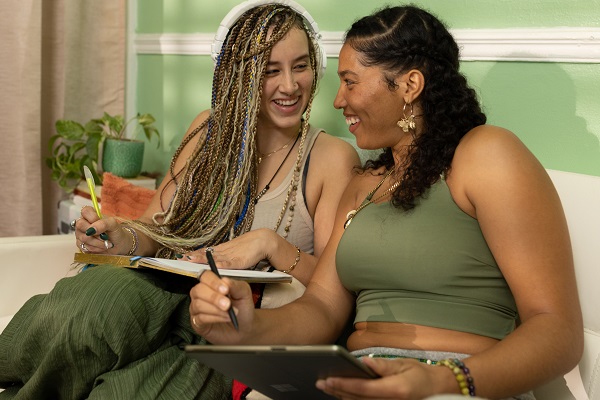Improving communication with anyone
Improving communication – what’s in it for me?
Better relationships and less conflict. In other words, improving communication gives you the ability to get on with more people. Our children, wider family, friends, work colleagues, or anyone.
Improving communication can lead to other benefits too! Things like a positive mood and optimistic outlook, deeper friendships, less stress or worries, and a happier emotional state.
Why should I bother?
- You might think: Does it matter if other people don’t get me or vice versa?
The short answer is: YES, it matters!
Improving communication is for everyone!
Think back to a moment when you were attempting to get your way.
Going somewhere, or doing something, for example.
Everything is hunky-dory emotionally when you get your way. You feel happy!
But what if you fail to get your way?
Most people feel a tinge of disappointment. Some get upset or sulk, and others use the silent treatment to create an emotional barrier between them and you!

So, YES, improving communication is very helpful indeed – but how!
Right, here comes the good stuff.
Getting started is not as hard as it might seem!
- You will be up and running after answering two simple questions!
Obviously, the more you get to know yourself and begin to recognise the differences in others, the better you will get.
Here is the first question!
- Am I more extroverted/outgoing, or am I more introverted/reserved?
Extraverted/outgoing people tend to: be comfortable meeting strangers, have a wide circle of contacts, and can talk at length.
Introverted/reserved people tend to: be comfortable in familiar places, have a close circle of contacts and talk less.
Here is the second!
- Am I more task-thinking focused, or am I more people-feeling focused?
Task/thinking people tend to: focus on the task at hand, consider what to do, keep lists, and tick things off.
People/feeling people tend to: focus on senses and emotions, tune into moods, and consider experiences and feelings.
Yip, you are putting yourself in a box, categorising yourself, but it is also a place to start improving communication!
You now have a way to describe your communication style!
- For example: introverted/reserved/people/feeling focused.
Keep reading if you are still with me because a Golden Nugget is coming next!
Here it is: you can ask yourself the same 2 questions when interacting with another person. Just change the beginning from “am I more…” to “does this person seem to be more…?”
You will have an insight into their communication preferences within a few seconds!

3-steps to improving communication
1 – is about understanding yourself, your way of communicating
2 – is about recognising and appreciating the different ways others communicate
3 – is about learning how to adapt your way of communicating to theirs
We can tick off steps 1 and 2. That only leaves step 3.
- Step 3 is a game changer because it supports better interaction and communication.
The outcome is better relations!
Give it a go, but remember practice makes perfect!

Left = small window of communication, limited interaction.
Right = big window of communication, improved interaction.
You may also like this post about How-to change destructive beliefs in 3 steps | Mindscreen
Is Low Self-Esteem Affecting Your Child's Potential?
Find out with our free 5-minute check
(For teacher and parent use)
Helping Children Flourish

Gav Devereux
Author bio
Being diagnosed with dyslexia, labelled remedial, and regularly told that I was a “stupid boy” affected my self-esteem.
Worse still, I carried low self-worth into my adult life. Yet, later, when I learned how to challenge my destructive mindset, I began to feel happier.
I thought, if I can change my way of thinking, anyone can!
And so, in 1996 I founded Mindscreen and began developing resources to help children to believe in themselves and go after their dreams.
That’s how the Mindscreen experience® came into being. I hope it helps your children as much as it has helped me!
